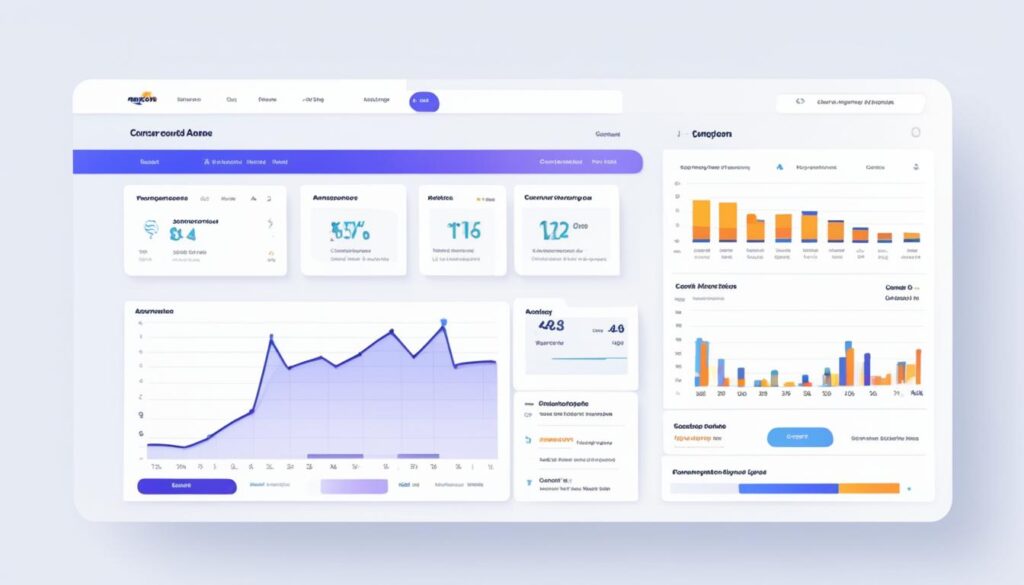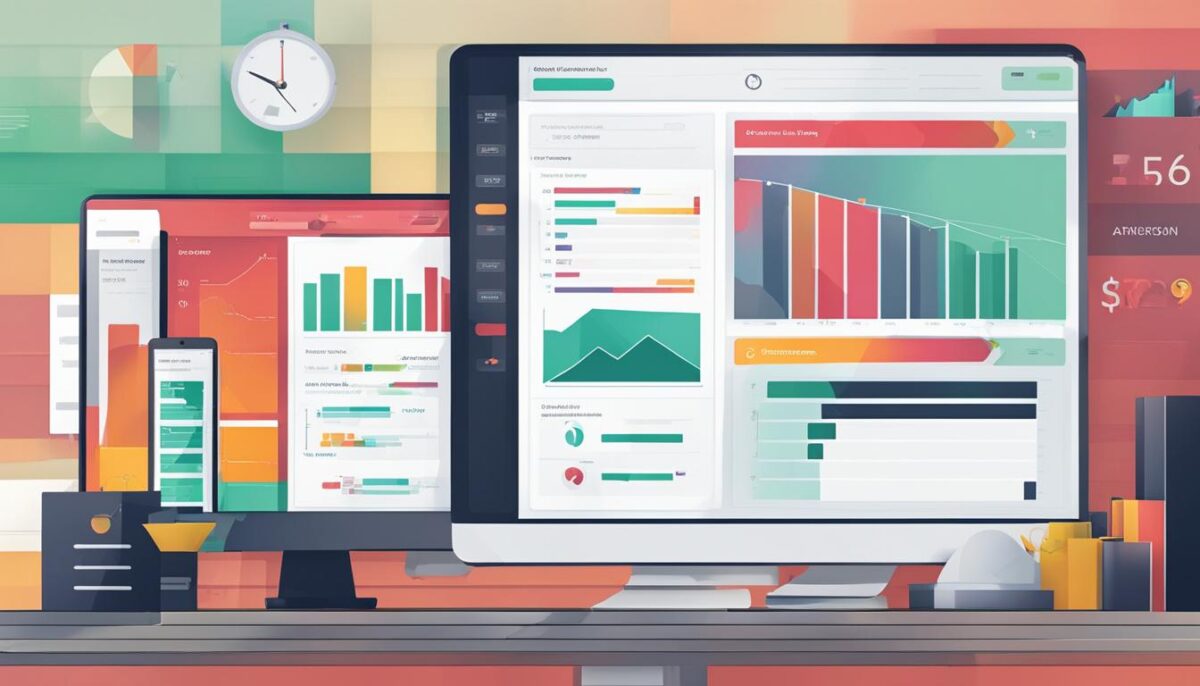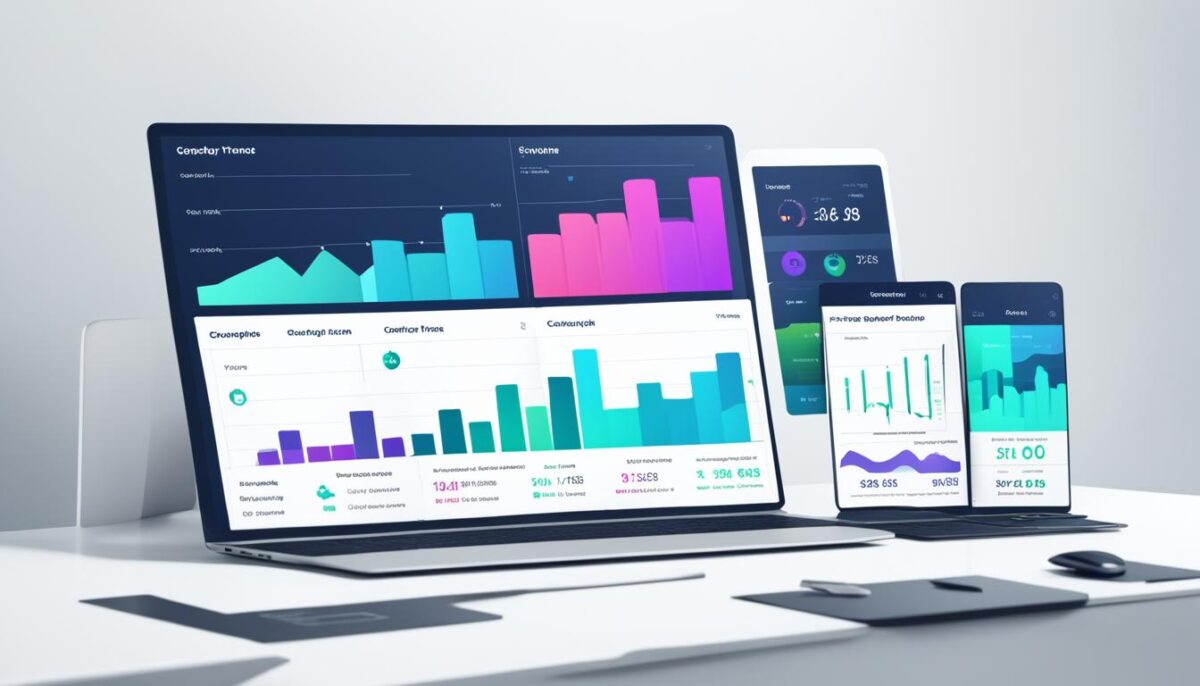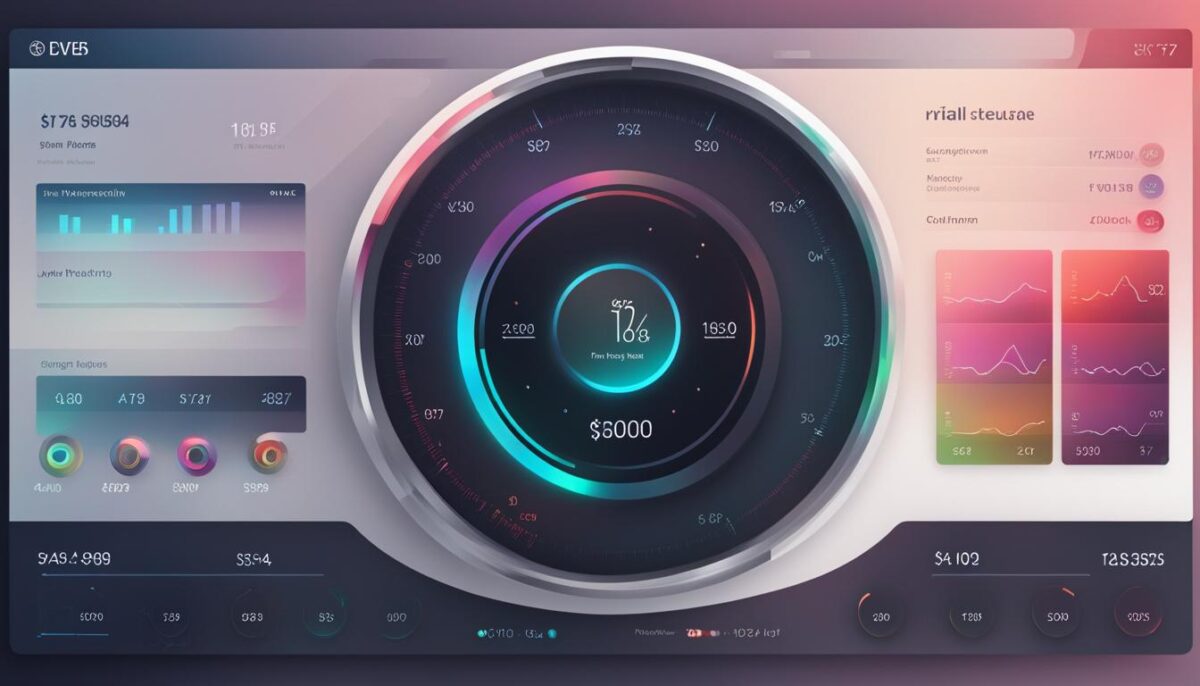Boost Sales with A/B Testing for Product Listings
In today’s competitive e-commerce landscape, optimizing product listings is essential to drive sales and increase revenue. But with so many variables to consider, such as headlines, images, descriptions, and pricing, how can you be sure you’re making the right design and copy choices?
That’s where A/B testing for product listings comes in. By testing different versions of your product listings and analyzing the results, you can identify the most effective strategies to increase conversion rates and boost sales. In this section, we will explore the power of A/B testing for product listings and provide you with strategies and tools to optimize your e-commerce success.
Key Takeaways:
- Optimizing product listings is crucial for driving sales and revenue in e-commerce.
- A/B testing offers insights into which design and copy choices work best.
- Testing different variables, such as headlines, images, descriptions, and pricing, can lead to increased conversion rates.
- Choosing the right A/B testing tools and analyzing results are essential for success.
- Continuous experimentation and optimization can help you stay ahead of the competition.
Understanding A/B Testing
Before implementing A/B testing for product listings, it’s crucial to understand its fundamental concepts and strategies. A/B testing allows you to create two versions of the same page and test them with your target audience, measuring which one performs better. Through A/B testing, you can make informed decisions regarding your product listings, ultimately increasing conversion rates and driving sales.
Effective A/B testing strategies require careful planning and execution. Begin by identifying the key elements of your product listing that you want to test, such as headlines, product images, descriptions, or pricing. Then, create variations of these elements to test with your audience. Make sure the changes you make in each variation are significant enough to produce measurable results.
When setting up your A/B tests, aim for a sizeable sample size to collect meaningful data, but avoid testing for too long to prevent bias. Once you have the results, analyze the data and determine the winning variation. Implement the successful version on your product listing to optimize its performance. Remember, A/B testing is an iterative process, and you should continuously experiment and make improvements based on data-driven insights.
Ultimately, A/B testing is an essential tool for any e-commerce business looking to optimize its product listings. By understanding the fundamentals and applying effective strategies, you can unlock the potential to improve your conversation rates and drive sales.
The Importance of Product Listing Optimization
Product listing optimization is a critical aspect of e-commerce success. Optimized product listings not only improve organic search rankings but also drive sales and improve conversion rates. A/B testing for product listings can help you identify the most effective optimization strategies for your business needs.
When optimizing your product listings, there are key elements you need to focus on, including:
- Product titles and descriptions that accurately reflect your product features and benefits.
- High-quality product images from multiple angles that showcase your product’s unique features.
- Clear pricing information and promotional offers, if applicable.
- Up-to-date and accurate product information, including product dimensions, colors, materials, and variations.
- Customer reviews can also improve trust and build credibility through social proof.
By optimizing your product listings and conducting A/B testing, you can discover which elements perform best for your business and target audience. This can help you make data-driven decisions that improve conversion rates, drive sales, and ultimately boost your e-commerce success.
Setting Up A/B Testing Experiments
Once you understand the fundamentals and importance of A/B testing, it’s time to set up your experiments. One of the most critical steps is selecting the variables you want to test on your product listings. Here are some options to consider:
- Headlines: Try different headlines to see which ones grab your audience’s attention the most.
- Product images: Experiment with different product images or variations to see which ones perform better.
- Descriptions: Play around with your product descriptions to determine what kind of messaging resonates with your audience.
- Pricing: Test different pricing strategies to see how varied price points affect your conversion rate.
Implementing the best practices of A/B testing in e-commerce will help you achieve accurate results. Here are some tips:
- Test one variable at a time to avoid confusion of the result.
- Choose a sizable sample base to receive meaningful data.
- Track your results with website analytics to notice the outcome of the testing.
- Avoid making decisions based on incomplete data.
- Run your experiments for a reasonable amount of time to factor in traffic variation.
By following these tips and set up your experiments, you’ll see your product listing conversion rates increase in no time.
Choosing the Right A/B Testing Tools
To make the most out of A/B testing, choosing the right tools are essential as it can simplify the entire process and maximize your results. Today, there are various A/B testing tools, each with its own unique features that can cater to different e-commerce platforms and specific needs.
One of the most popular A/B testing tools is Optimizely, which allows you to create and run experiments without any coding knowledge. It features a user-friendly interface and offers integration with popular e-commerce platforms like Shopify, Magento, and more.
Other A/B Testing Tools:
| Tool | Features |
|---|---|
| Google Optimize | Integrates with Google Analytics, easy to use visual editor |
| VWO | Offers advanced targeting and segmentation options to improve personalization |
| Crazy Egg | Provides heatmaps and clickmaps to help visualize user behavior |
When selecting the right A/B testing tool, it’s important to consider your e-commerce platform, budget, and specific needs. Additionally, you should follow best practices for A/B testing, such as testing one variable at a time, running experiments for a sufficient amount of time, and analyzing the results accurately.
By using the right A/B testing tools and following best practices, you can effectively optimize your product listing performance and increase conversion rates.
Analyzing A/B Testing Results
Once you have completed your A/B testing experiments, it’s time to analyze your results. A/B testing can help you determine which variations of your product listings make the most impact on your conversion rates and ultimately increase sales. Failure to utilize data-driven insights could result in missed opportunities for optimization.
Begin by compiling all the data gathered from your experiments, including the number of visitors, clicks, and conversions for each variation. Use this data to calculate the conversion rates for each variation.
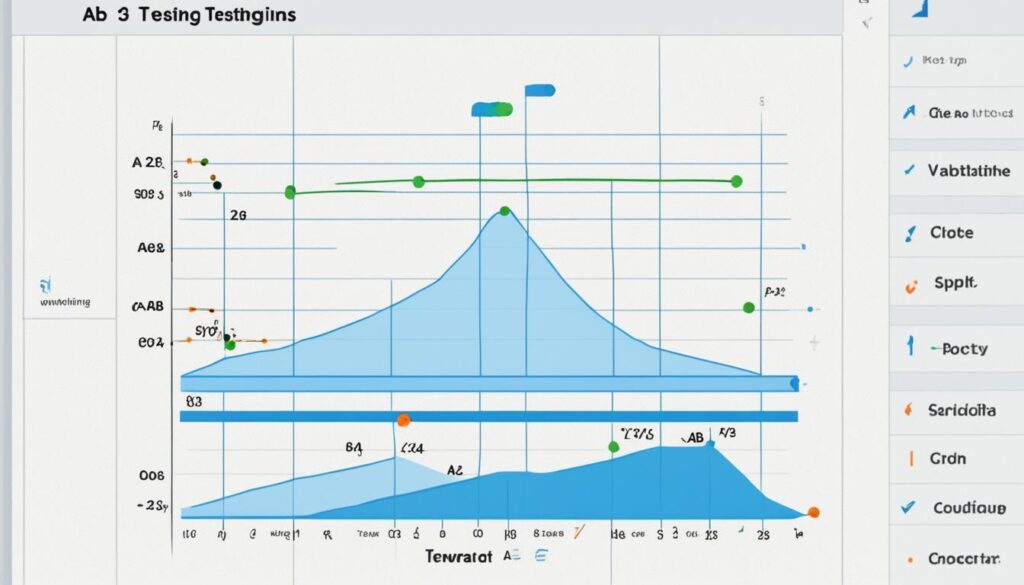
Identify which variation had the highest conversion rate and compare it to your control group. Don’t jump to conclusions, as small sample sizes or external factors could affect your data; instead, ensure your results are statistically significant before drawing conclusions.
The insights gained from analyzing your A/B testing results can be applied to optimize your product listings. Use what you learned and continue to experiment to make iterative improvements and drive long-term conversion rate optimization. Learn more about staying up to date.
Implementing Successful A/B Testing Strategies
Maximizing your A/B testing efforts requires effective strategies that can transform your product listings. Here are some tips and techniques that you can use to enhance your experiments and make informed decisions based on data:
- Focus on Key Elements: When conducting A/B testing, consider the vital elements of product listings such as headlines, images, and descriptions. Testing variables such as product titles, pricing, and product descriptions can also help you improve your overall product listing performance.
- Test One Variable at a Time: To get accurate results from your A/B testing experiments, test one variable at a time. Avoid changing multiple variables simultaneously so that you can clearly identify the contributing factor to any changes in conversion rates.
- Set Clear Goals and Metrics: Define clear goals and metrics before launching A/B testing experiments. By setting specific goals, it becomes easier to measure and track results accurately. Ensure that the goals align with your overall e-commerce strategy and drive optimization of product listings.
- Explore Alternative Strategies: Don’t limit yourself to one A/B testing approach. Experiment with different strategies and compare their results to determine the most effective option. This approach can lead to insightful discoveries in product listing optimization, ultimately increasing conversion rates.
- Review Case Studies: Learn from the experience of others by reviewing case studies that highlight successful A/B testing strategies. By analyzing these case studies, you may learn valuable insights that you can apply to your own experiments.
By following these A/B testing strategies, you can make informed decisions based on data-driven insights and continuously improve your product listing performance to boost sales.
Leveraging A/B Testing for Pricing Optimization
Pricing plays a crucial role in sales. Pricing your products too high can drive away potential customers, while setting them too low can lead to minimal profits. Here’s where A/B testing comes in. By testing different pricing strategies, you can optimize your product pricing and improve your conversion rates.
To leverage A/B testing for pricing optimization, start by analyzing your current pricing strategy. Examine your competitors’ prices and gather data about your target audience’s willingness to pay. Then, create A/B testing experiments that compare different pricing options, such as discounts, bundles, and tiered pricing.
Throughout the experiments, keep track of key metrics like conversion rates and profit margins. Over time, you will start to see which pricing strategies are most effective for your target audience.
Did You Know?
To accurately test different pricing strategies, make sure that your A/B testing experiments are run for a reasonable amount of time. This will help ensure that you collect enough data to make informed decisions.
When optimizing your product pricing, it’s crucial to keep your target audience in mind. Experiment with different pricing strategies to find the sweet spot that resonates with your customers. Different groups may respond differently to various pricing options, so consider segmenting your audience to make your experiments more effective.
Remember, pricing optimization is an ongoing process. Continuously monitor and adjust your pricing strategies to ensure that you’re maximizing profits and driving sales.
Streamlining the A/B Testing Process
A/B testing is an essential tool for optimizing your e-commerce success, but managing experiments can be time-consuming and complex. Fortunately, there are strategies and tools available to streamline the A/B testing process, making it more efficient and manageable.
- One effective strategy is to plan and prioritize your testing schedule to avoid duplication or unnecessary experiments. Identify key areas for improvement and set clear goals for each test.
- Another strategy is to use automation tools to simplify the process and save time and resources. There are several A/B testing tools available that can automate the testing process and provide valuable insights and recommendations.
- Finally, following best practices such as starting with small tests, carefully selecting your sample size, and monitoring your results can help you optimize your testing process and produce meaningful insights.
By streamlining the A/B testing process, you can focus on the most important areas for optimization and accelerate your conversion rate success.
Measuring the Success of A/B Testing
Measuring the success of your A/B testing experiments is crucial in making data-driven decisions to improve the performance of your product listings. To evaluate the effectiveness of your tests, track key metrics such as conversion rates, average order value, and customer engagement. Understanding these metrics can uncover insights into the overall performance of your product listings.
Conversion rate optimization is a critical metric to track when conducting A/B testing experiments. It measures the percentage of website visitors who complete a desired action, such as making a purchase or filling out a form. A higher conversion rate indicates improved product listing performance, indicating that the optimized variation is resonating better with your target audience.
Average order value is another important indicator of A/B testing success, as it tracks the amount of revenue generated per transaction. By optimizing your product listings to increase the average order value, you can generate more revenue and improve your bottom line.
Finally, tracking customer engagement is important in measuring the success of your A/B testing experiments. By monitoring metrics such as bounce rate, time on site, and session duration, you can gain insight into the customer experience on your website. By improving customer engagement, you can increase the likelihood of visitors converting into customers.
The Power of Data-Driven Decision Making
Measuring the success of your A/B testing experiments provides valuable insights into optimizing your product listings and improving conversion rates. By using data to guide decision making, you can make informed choices that resonate with your target audience and drive sales. Don’t forget to analyze the results of your A/B testing experiments and continuously optimize your product listings to boost your conversion rates.
Unlocking Continuous Optimization
A/B testing is not a one-time process; it’s an ongoing strategy that can give you continuous optimization for your product listings. By leveraging A/B testing, you can make iterative improvements based on data-driven insights, leading to better conversion rates and increased sales.
To incorporate A/B testing into your overall e-commerce strategy, you’ll need to follow a few key steps:
- Track your data: Use an analytics tool to gather data on your product listings, and identify areas for optimization with A/B testing.
- Set goals: Determine what metrics you want to improve, such as conversion rates or average order value.
- Design experiments: Using the tools and strategies we’ve covered in this guide, set up experiments to test different variations of your product listings.
- Analyze results: Review the data to identify winning variations and make informed decisions about which strategies to implement.
- Implement changes: Use your insights to make changes to your product listings and test new variations to continue optimizing.
Remember that A/B testing is not a one-time fix; it’s an ongoing process that allows you to continuously improve your product listings and drive sales. By using the right A/B testing tools and strategies, you can take your e-commerce success to the next level.
A/B Testing for Product Listings
In conclusion, A/B testing for product listings is a critical tool for optimizing your e-commerce success. By implementing effective A/B testing strategies and leveraging the right tools, you can continuously improve your product listing performance and increase conversion rates. Remember to focus on product listing optimization, and use A/B testing to identify the most effective elements such as headlines, product images, descriptions, and pricing. After that, streamline the A/B testing process with automation tools and measure success through key metrics such as conversion rates, average order value, and customer engagement. Finally, continuously optimize your product listings with iterative improvements based on data-driven insights to unlock your full e-commerce potential.
Learn More About Amazon SEO
FAQ
What is A/B testing for product listings?
A/B testing for product listings is a process of comparing two different versions of a product listing to determine which one performs better in terms of conversion rates. It involves creating variations of elements like headlines, product images, descriptions, and pricing, and measuring the impact of these changes on user behavior and sales.
Why is A/B testing important for product listing optimization?
A/B testing is crucial for product listing optimization because it allows you to make data-driven decisions to improve your conversion rates. By testing different variations, you can identify the most effective strategies to attract and engage customers, resulting in increased sales and revenue.
How do I set up A/B testing experiments for my product listings?
To set up A/B testing experiments, you need to define the elements you want to test, such as headlines, product images, descriptions, and pricing. Create two or more variations of these elements, divide your audience into groups, and randomly assign each group to one variation. Measure the performance of each variation to identify the best-performing one.
What are the best practices for A/B testing?
Some best practices for A/B testing include testing one element at a time, testing a significant sample size, running experiments for an appropriate duration, and ensuring statistical significance in your results. It’s also important to have a hypothesis for each test and document the entire testing process for future reference.
Which tools can I use for A/B testing?
There are various A/B testing tools available, such as Optimizely, Google Optimize, VWO, and Convert. These tools provide features like experiment setup, data analysis, and result tracking to simplify the A/B testing process. Choose a tool that suits your e-commerce platform and specific needs.
How do I analyze the results of my A/B testing experiments?
When analyzing A/B testing results, focus on key metrics like conversion rates, average order value, and customer engagement. Compare the performance of different variations to identify statistically significant differences. Use data analysis tools provided by A/B testing platforms to interpret the results and make informed decisions.
What are the benefits of continuous A/B testing?
Continuous A/B testing allows you to make iterative improvements to your product listings over time. By constantly testing and optimizing, you can uncover new strategies to increase conversion rates and maximize your sales. Continuous testing ensures that your product listings stay relevant and effective in a changing market.
Can A/B testing help optimize pricing for product listings?
Yes, A/B testing can be used to optimize pricing for product listings. Test different price points and analyze the impact on conversion rates and sales. Experiment with strategies like discounts, bundles, and tiered pricing to find the optimal pricing strategy that resonates with your target audience.
How can I measure the success of my A/B testing experiments?
Key metrics like conversion rates, average order value, revenue per visitor, and customer engagement can be used to measure the success of A/B testing experiments. Compare the performance of variations to the original and track the impact on these metrics to evaluate the effectiveness of your A/B testing efforts.
What should I do after implementing A/B test findings?
Once you have implemented A/B test findings and identified winning variations, it’s important to monitor the performance and measure the impact on sales. Use the insights gained from successful A/B tests to inform future optimization efforts and continuously refine your product listings based on data-driven insights.



